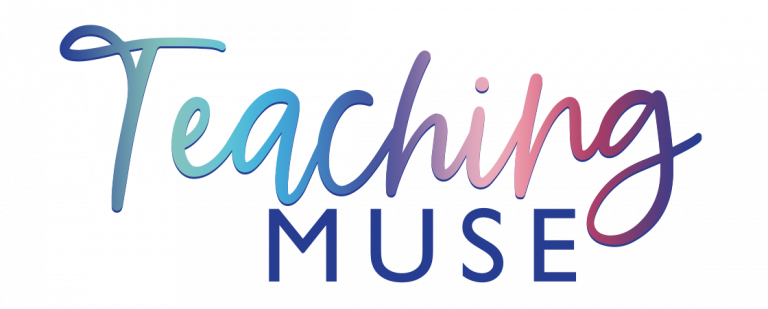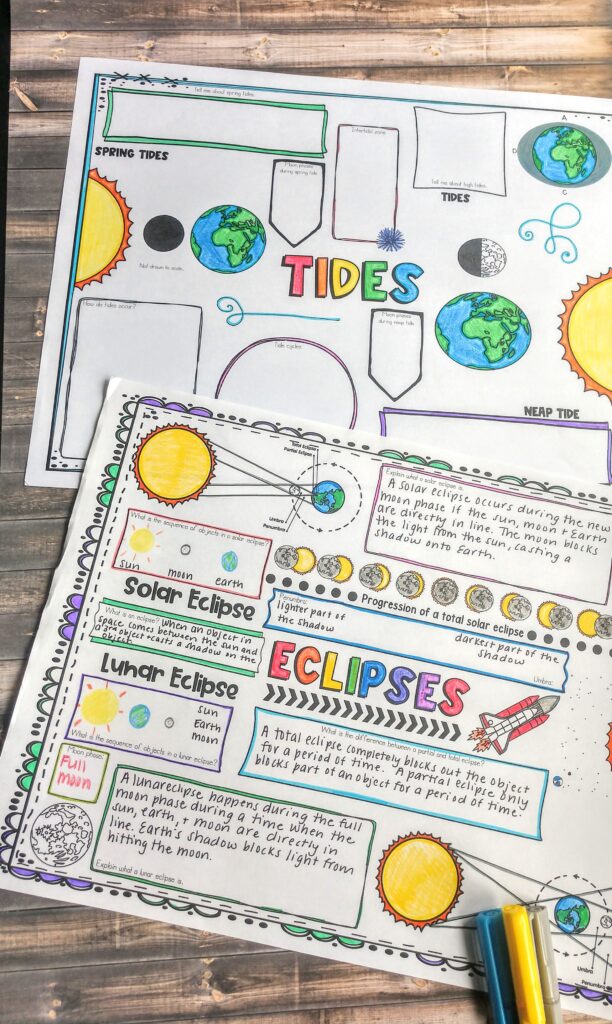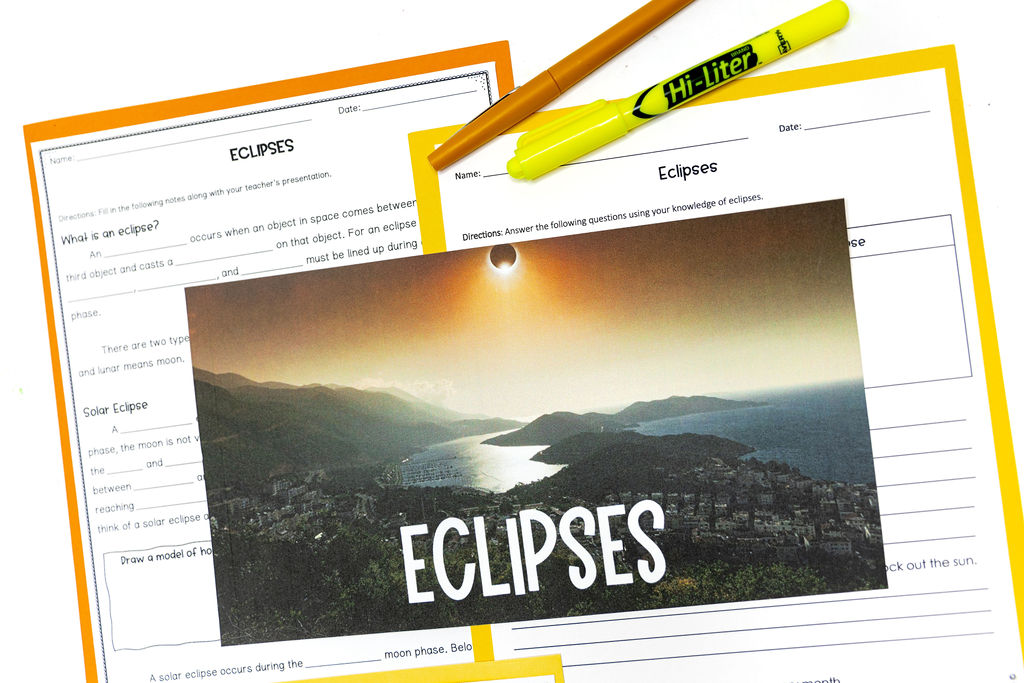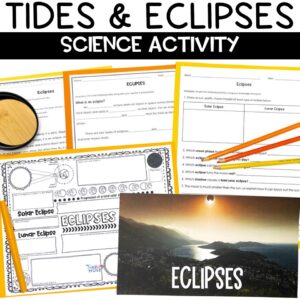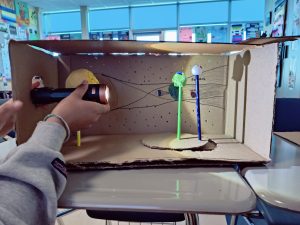Teaching earth science concepts to your students can be challenging, but it doesn’t have to be dull or difficult. One intriguing topic that captures the imagination of students is solar eclipses. To make the learning experience both enjoyable and informative, let’s explore 4 engaging strategies for teaching solar eclipses.
4 Ways to Teach Solar Eclipses
Interactive Worksheets and Activities
One effective method to introduce solar eclipses is through interactive worksheets and activities. This activity offers a variety of hands-on materials that can be easily incorporated into your lesson plans.
From coloring pages to diagramming exercises, these activities allow students to actively engage with the content, making the learning experience more memorable.
Encourage students to work in pairs or small groups, fostering collaboration and discussion. This approach reinforces the information and helps students grasp the concept of an eclipse in a more tangible way.
Classroom Demonstrations
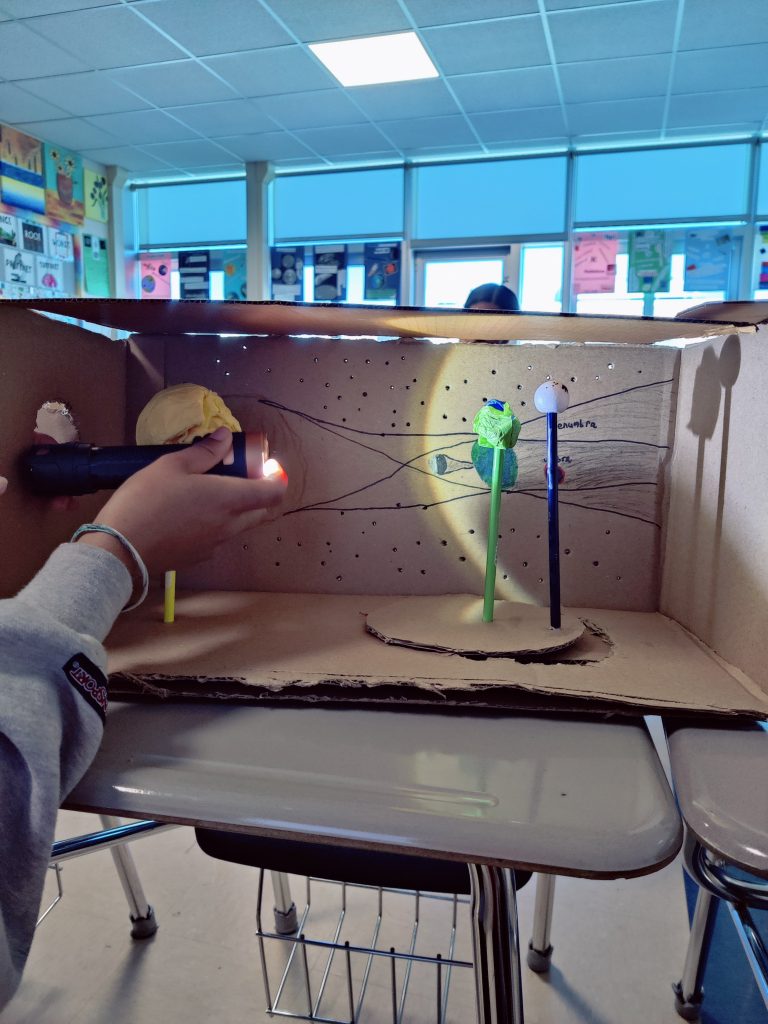
Bring the solar eclipse into the classroom by using simple yet effective demonstrations. The activity provides ideas for creating models to illustrate the mechanics of a solar eclipse. Consider using everyday materials such as flashlights, balls, and even students to represent the sun, moon, and Earth.
By physically demonstrating the alignment and movement of the Sun, moon, and Earth, students can visualize the process of a solar eclipse. This hands-on approach transforms abstract concepts into concrete experiences, enhancing comprehension and retention.
Digital Exploration
In today’s tech-savvy world, incorporating digital lessons is an excellent way to engage students. Digital activities can leverage the power of technology to teach about eclipses. These resources cater to diverse learning styles, from interactive presentations to online quizzes.
Assigning digital tasks allows students to explore the topic at their own pace, promoting self-directed learning. Additionally, incorporating technology into the lesson plan fosters digital literacy skills, an essential aspect of modern education.
Real-Life Connections
Help your students understand the real-world significance of eclipses by connecting the scientific concept to cultural and historical events.
History and Cultural Beliefs have led others to believe the following about eclipses:
- Many ancient cultures interpreted solar eclipses as supernatural events, often attributing them to gods or mythical beings.
- Stories varied across cultures, with some viewing an eclipse as a battle between celestial entities, while others saw it as a sign of impending disaster or change.
- Solar eclipses have held religious significance with some cultures considering them divine messages or omens, influencing religious practices and rituals.
- Eclipses were believed to mark moments of divine intervention or cosmic alignment.
Teaching about solar eclipses doesn’t have to be a daunting task. By utilizing interactive worksheets, engaging demonstrations, digital resources, and real-life connections, you can create a dynamic and enriching learning experience for your students.
